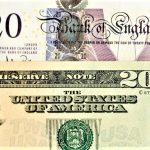Gold prices pushed down by speculations that the Fed may wait until May before reducing rates.
The gold price (XAUUSD) begins the new week on a lower note, halting a two-day-old recovery trend from near the $2,000 psychological barrier, or more than a one-month low reached last Wednesday. The incoming US macro data, notably Friday’s positive consumer mood index, indicated that the economy is in strong shape.
Reduced expectations that the Fed would cut rates in March operate as a drag on the XAUUSD.
Furthermore, the recent hawkish statements made by a slew of Influential Federal Reserve (Fed) policymakers reduced market expectations for an early rate cut. This, in turn, is seen as a significant element directing flows away from the non-yielding yellow metal.
Retreating US bond yields, a weaker USD, and geopolitical risk should limit further losses.
Aside from that, a generally optimistic tone in the equity markets adds to the offered tone around the gold price. However, the potential of further escalation of geopolitical tensions in the Middle East, as well as persisting concerns over China’s slowing economic development, may provide some support for the safe-haven XAUUSD. Furthermore, the flight to safety puts pressure on US Treasury bond yields, keeping US Dollar (USD) bulls on the defensive. This, in turn, should help limit future losses for the precious metal, warranting caution for bears traders.
Daily Market Movers: Gold price drifts down as investors slash expectations on a March Fed rate drop.
Reduced bets on the Federal Reserve cutting interest rates early, along with a generally favorable risk tone, prompts fresh selling around the gold price on the first day of the new week.
The better-than-expected US macro data reported this week, combined with recent statements by Fed officials, have prompted investors to reduce their bets on an early interest rate cut.
According to the University of Michigan’s preliminary poll, the US Consumer Sentiment Index increased from 69.7 in December to 78.8 this month, its highest level since July 2021.
According to CME Group’s Fed Watch Tool, traders are currently pricing in a The possibility of a Fed rate drop at the March policy meeting is less than 50%, down from more than 70% last week.
Chicago Fed President Austan Goolsbee stated on Friday that the central bank needed more inflation data before making a decision to decrease interest rates.
Separately, San Francisco Fed President Mary Daly said there is still a lot of work to be done on inflation and that it is early to expect rate decreases.
US launched an airstrike on a Houthi anti-ship missile.
On Sunday, the US launched an airstrike on a Houthi anti-ship missile, marking the seventh round of attacks since the Iran-backed rebel group began targeting commerce ships in the Red Sea.
There have been at least 140 attacks on US bases since October 17. and seven in the previous week, including the major military strikes on Ain al-Assad base in Iraq, which injured US and Iraqi soldiers.
Iran has pledged vengeance for yesterday’s strike in Damascus that killed five top military officers, which it blamed on Israel, which has neither confirmed nor denied involvement.
Israeli soldiers and Hamas members battled in numerous locations on Sunday, while Israeli planes began intensive shelling of Khan Younis in the southern Gaza Strip.
Israeli Prime Minister Benjamin Netanyahu appeared to rule out a two-state solution to the conflict, insisting that Israel maintain security control over all territory west of Jordan.
The People’s Bank of China (PBoC) decided earlier this Monday to leave the one-year and five-year Loan Prime. Rate (LPR) remained steady at 3.45% and 4.20%, respectively.









